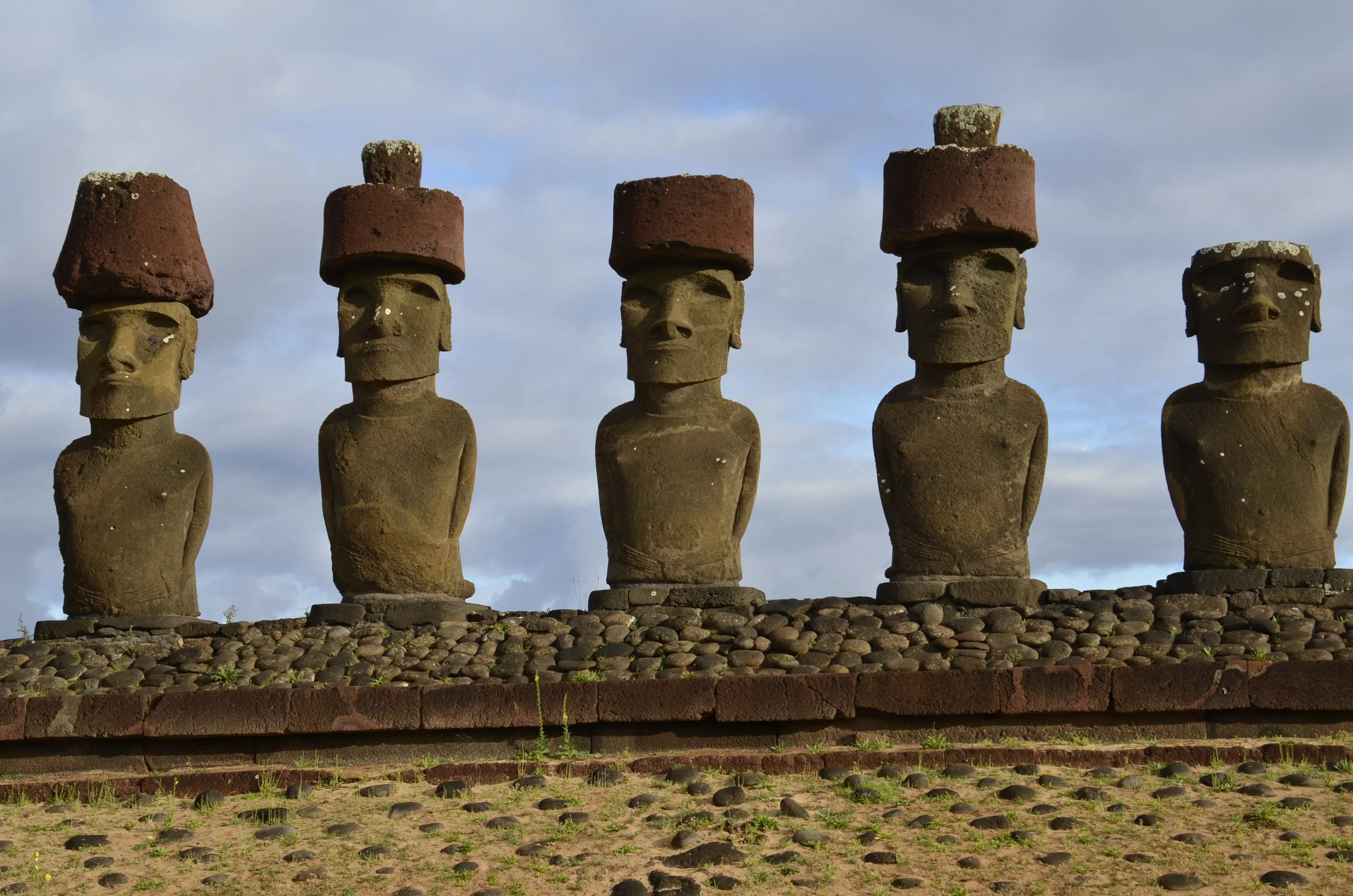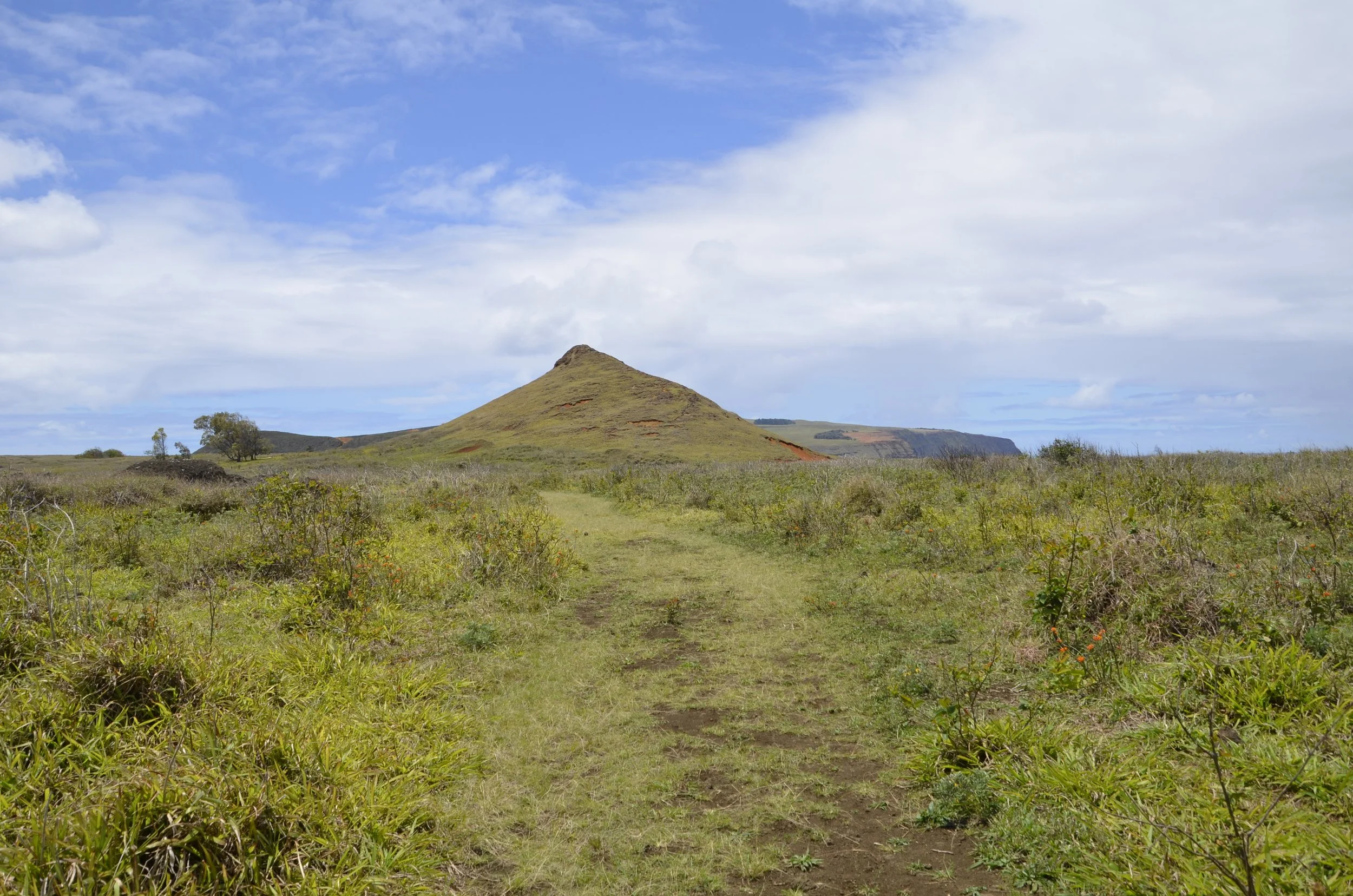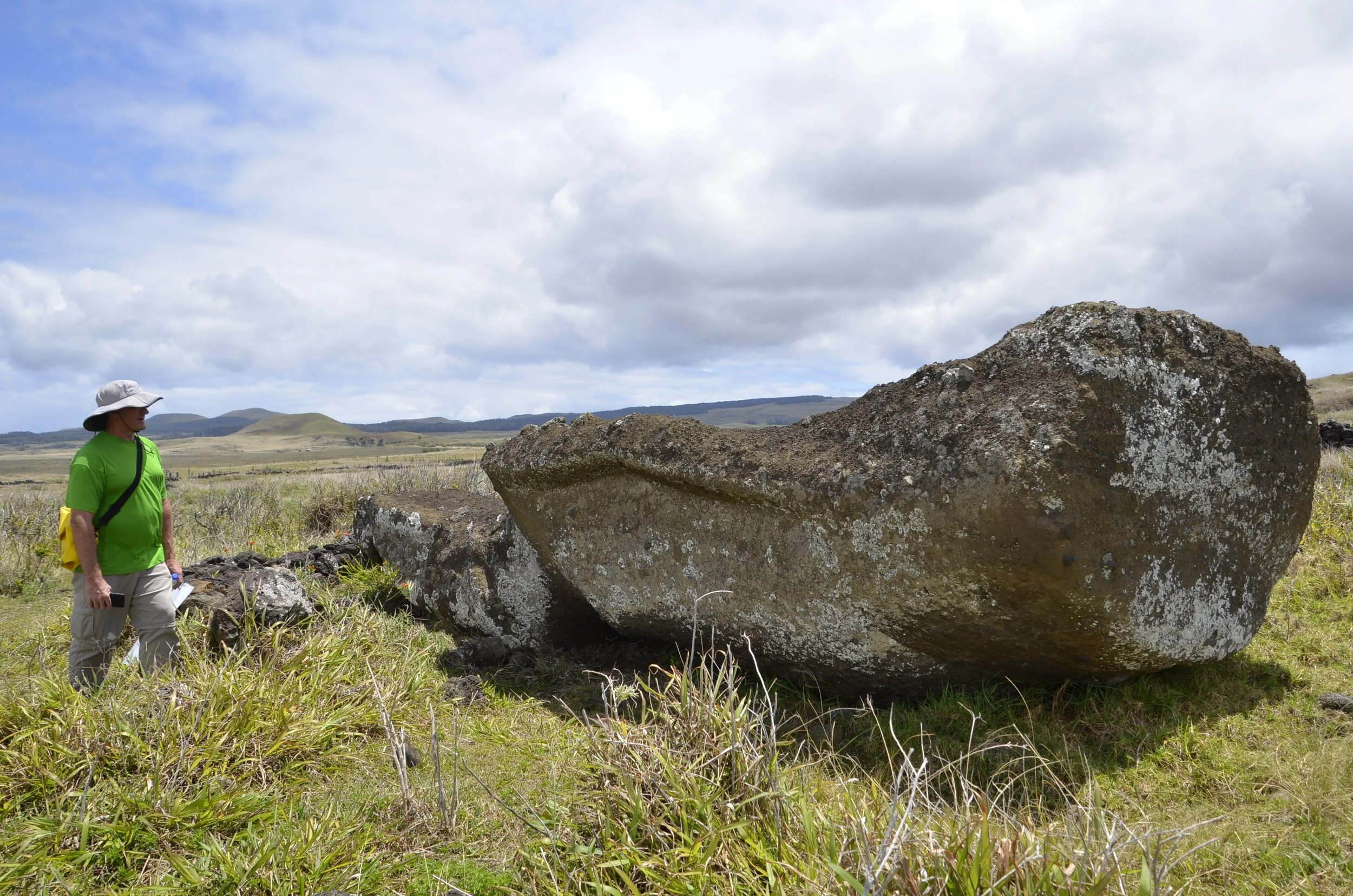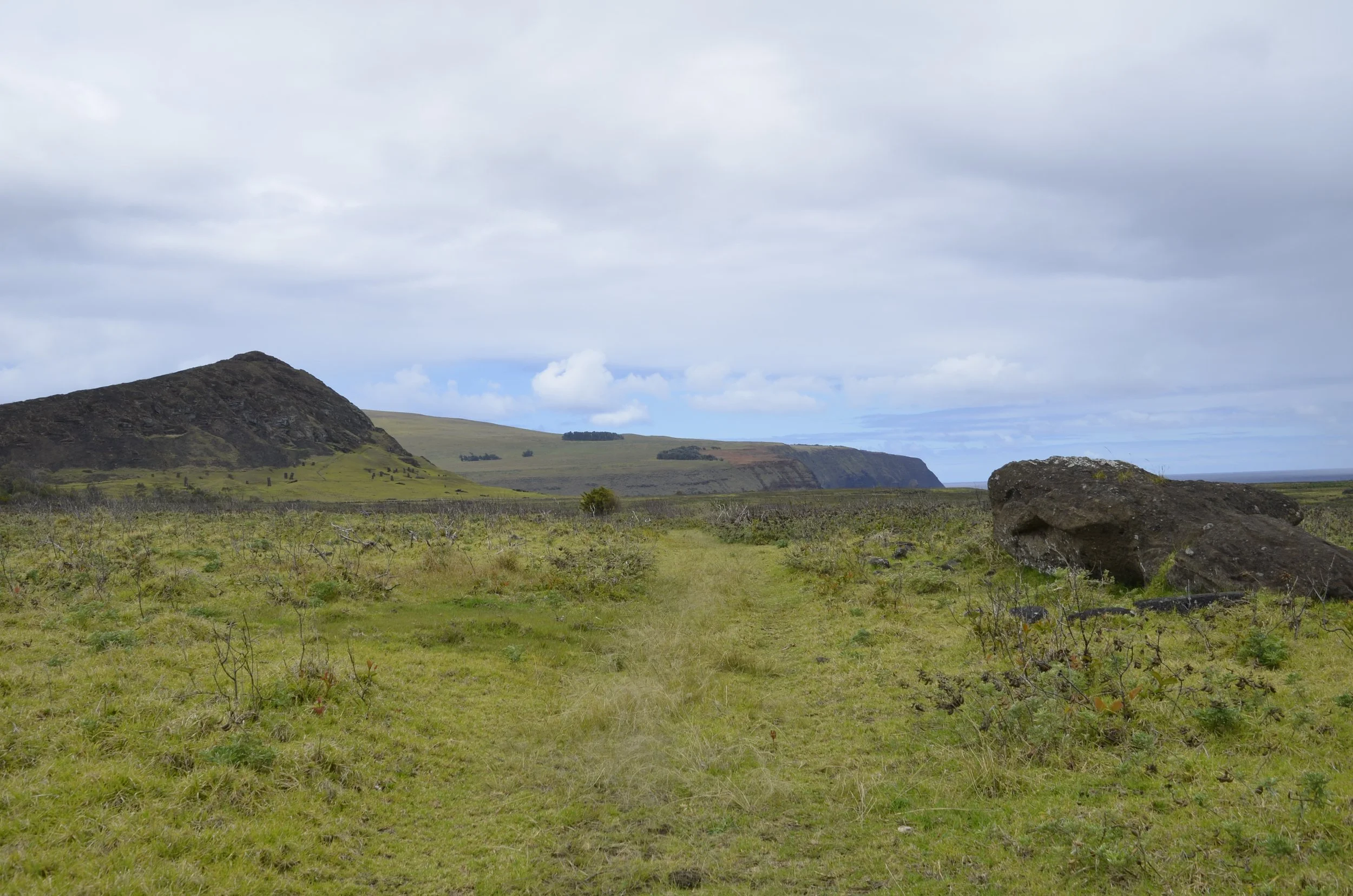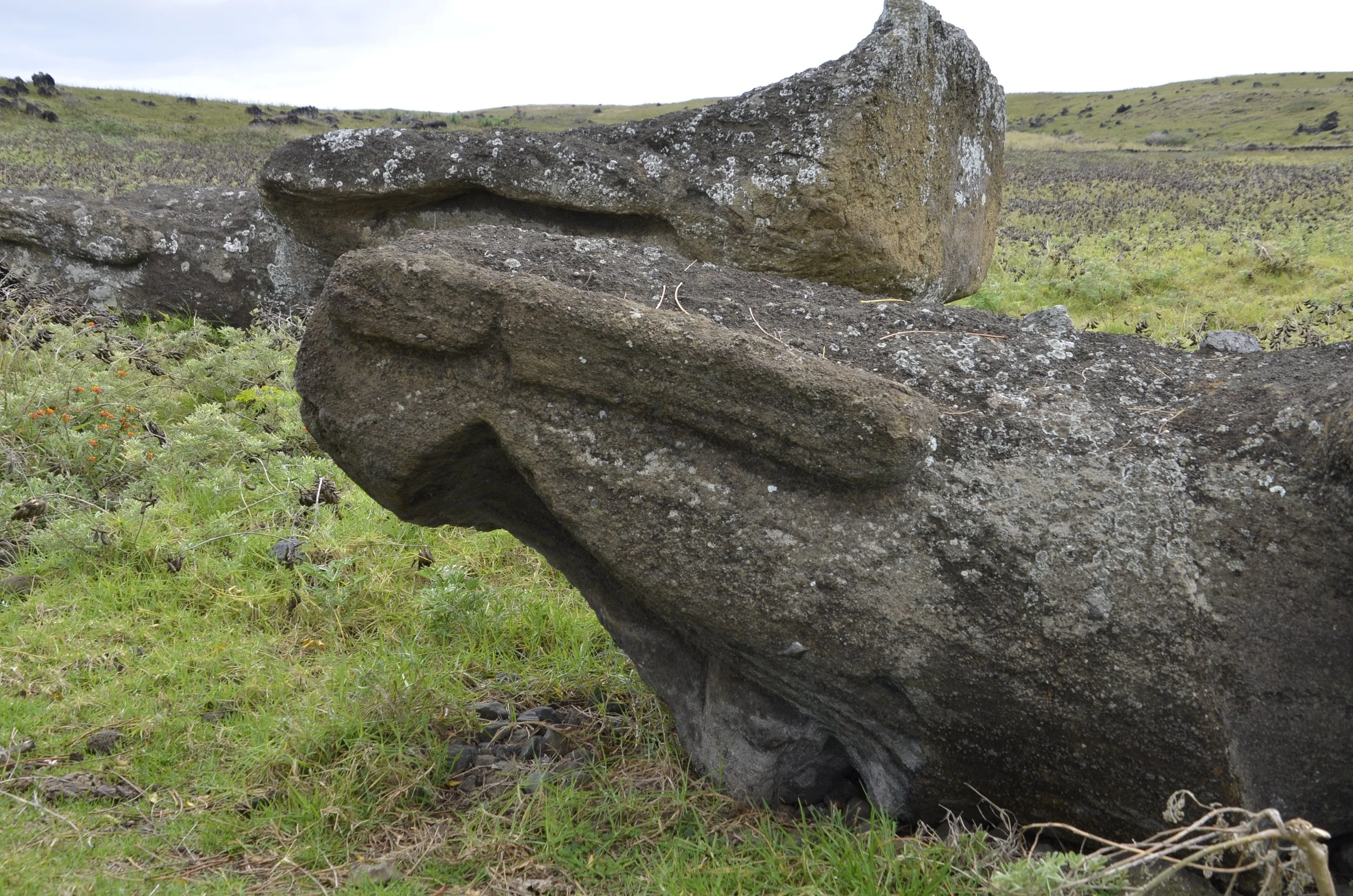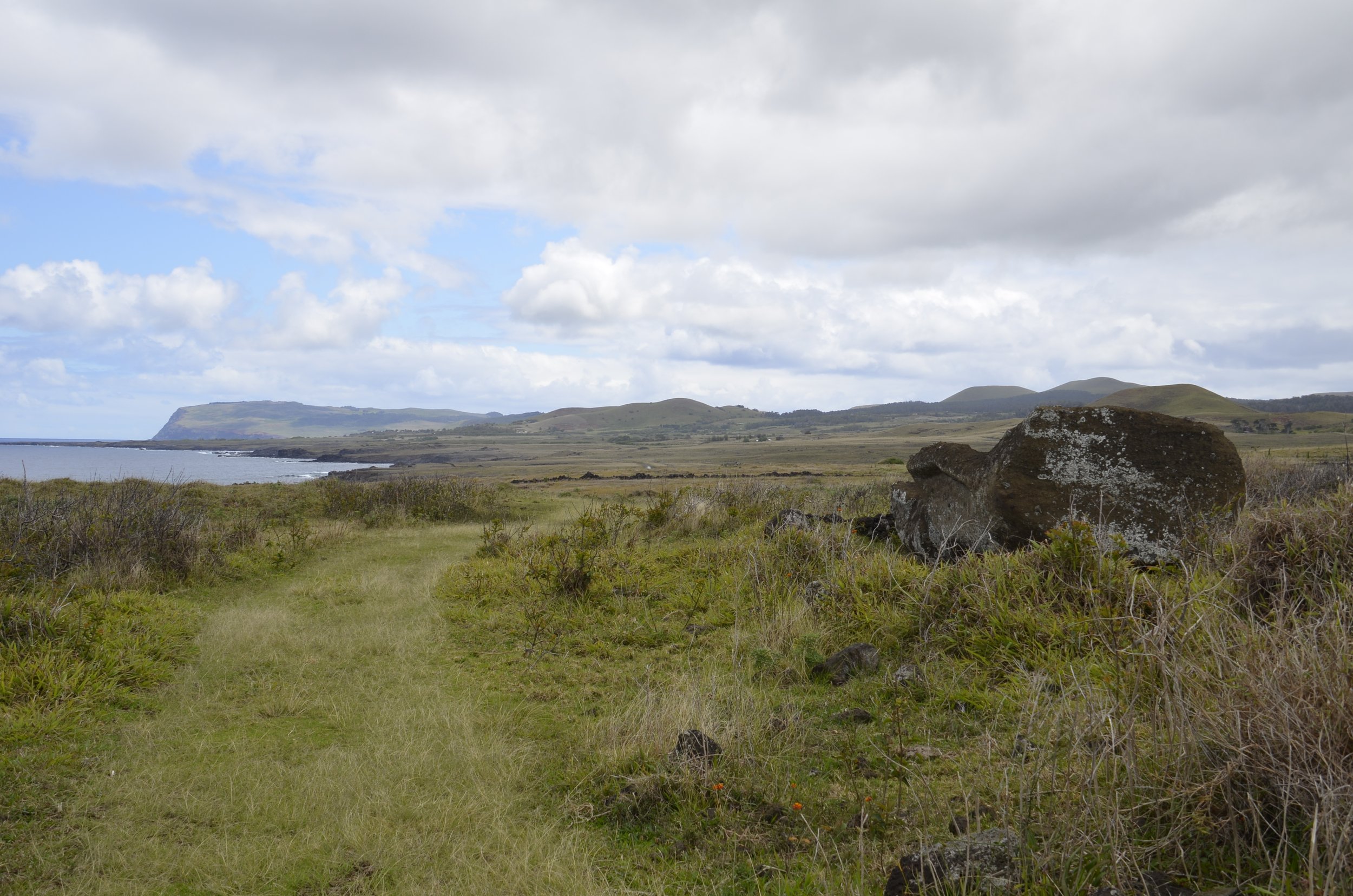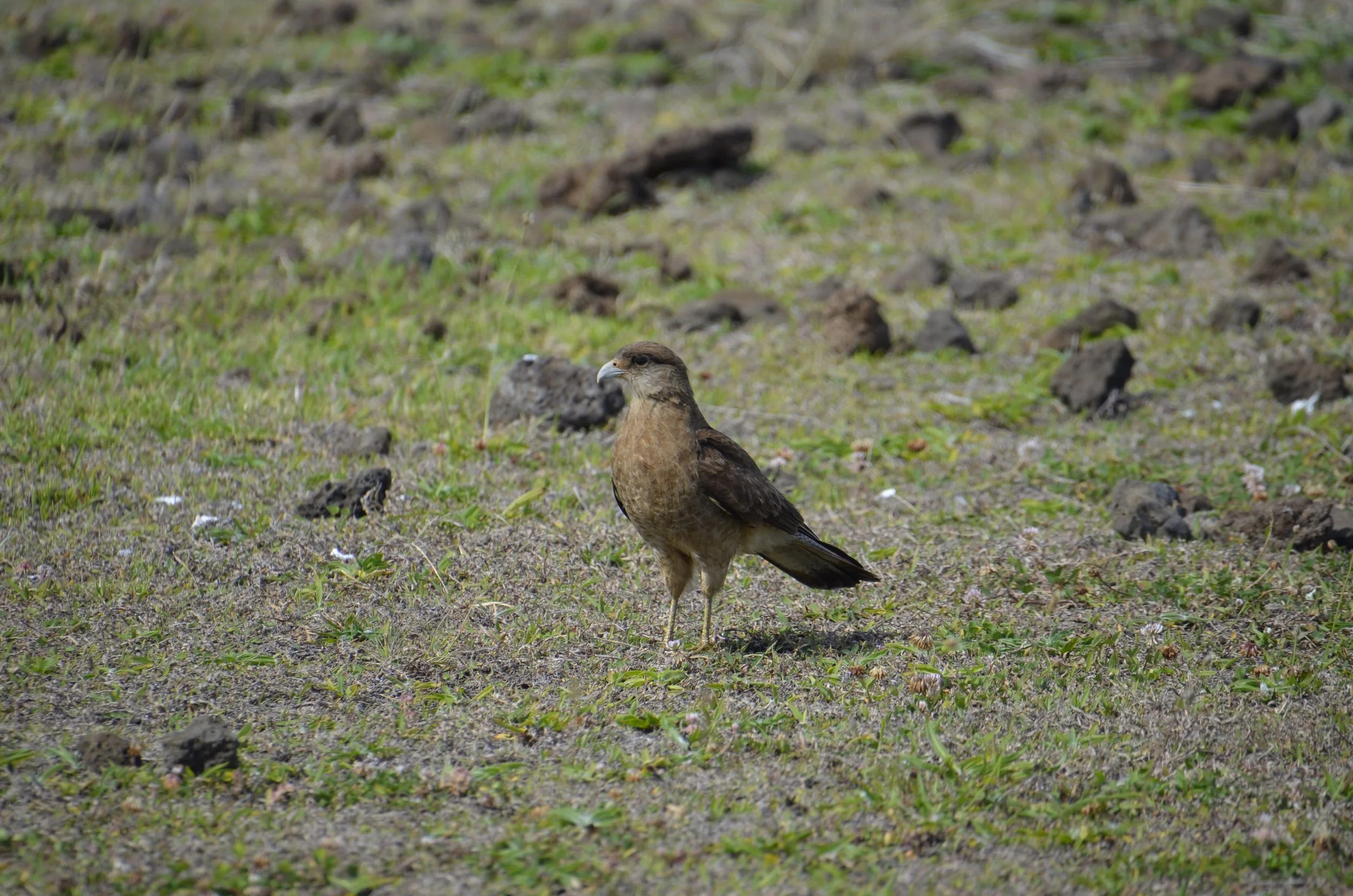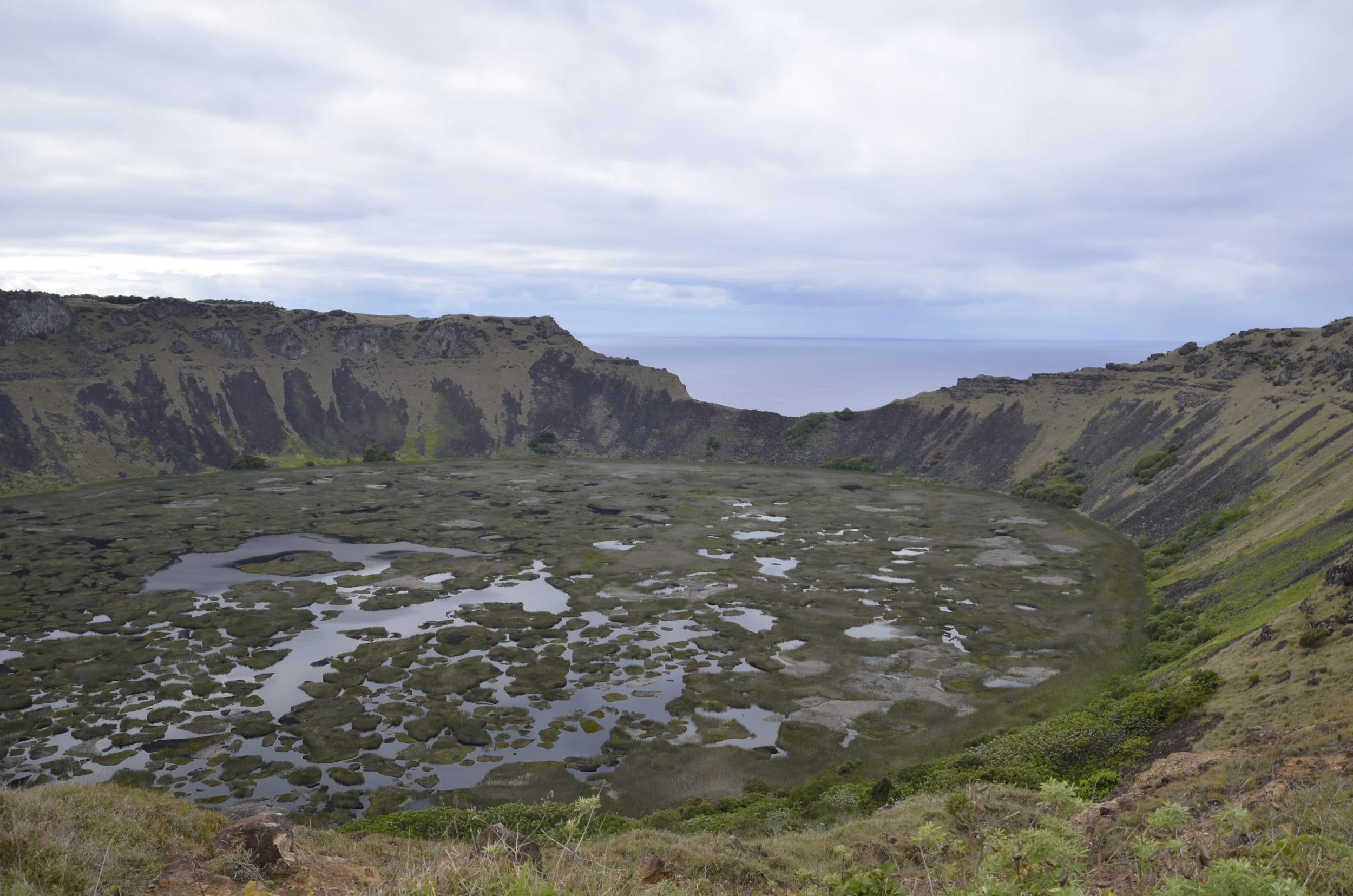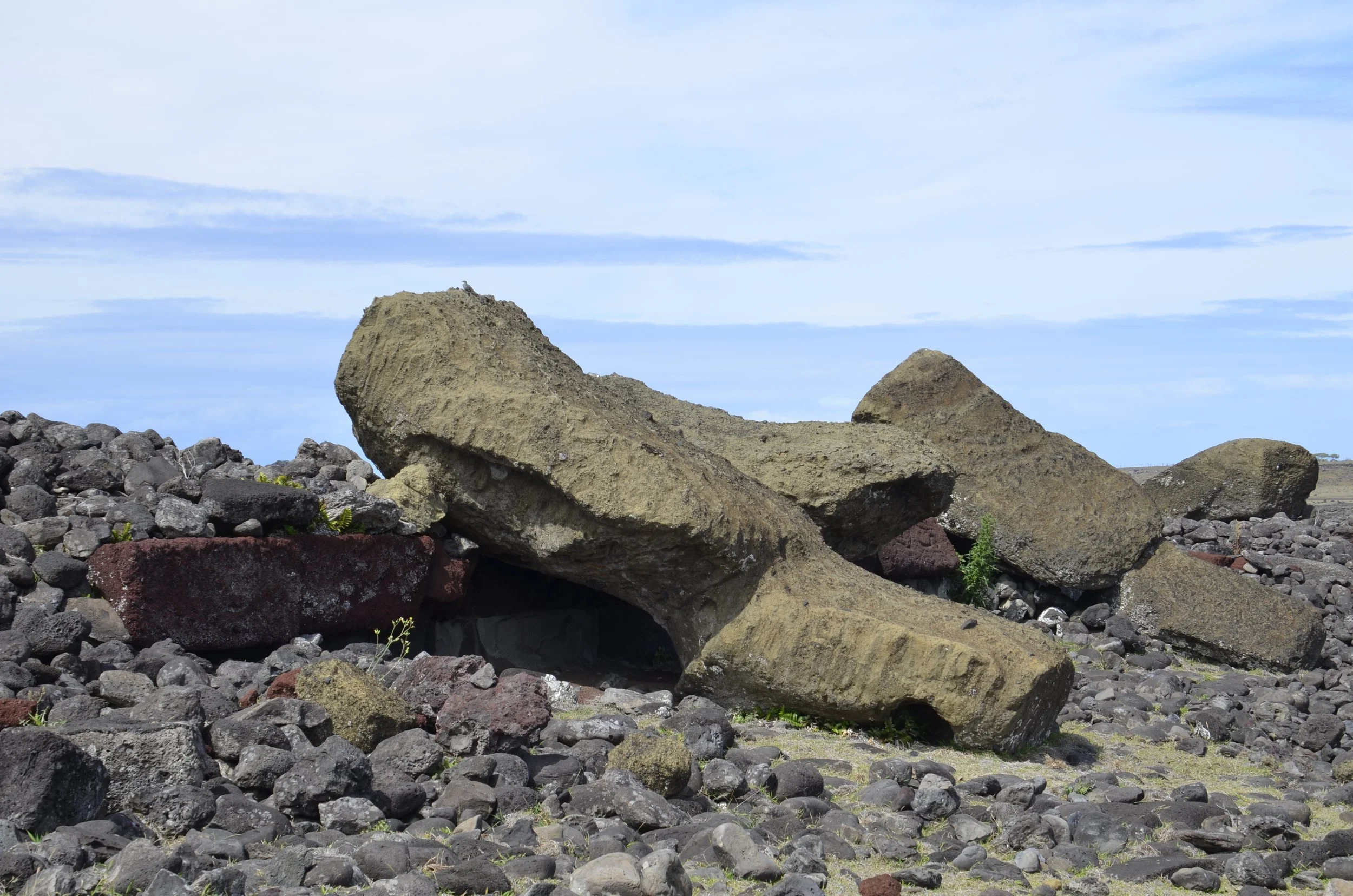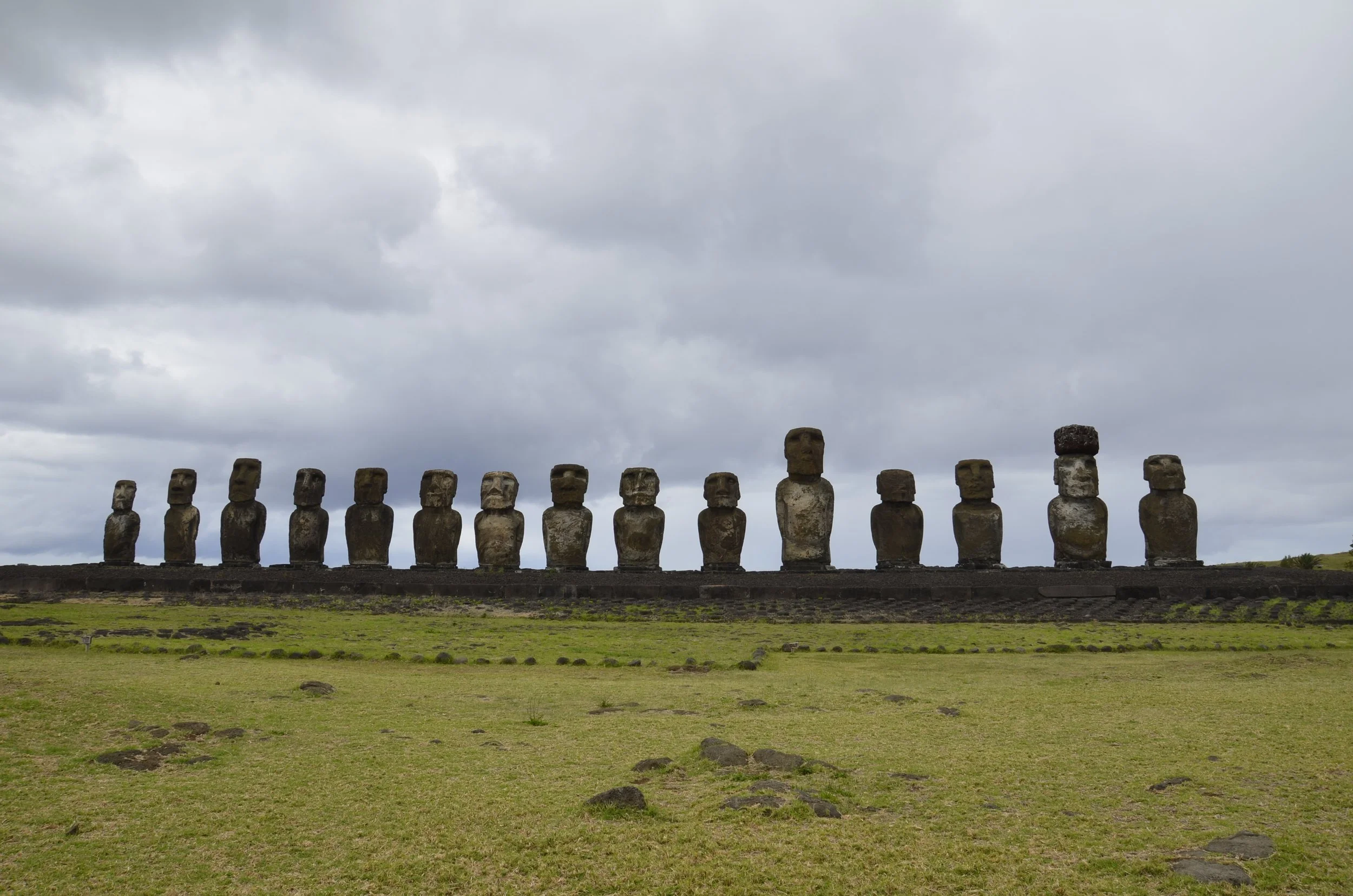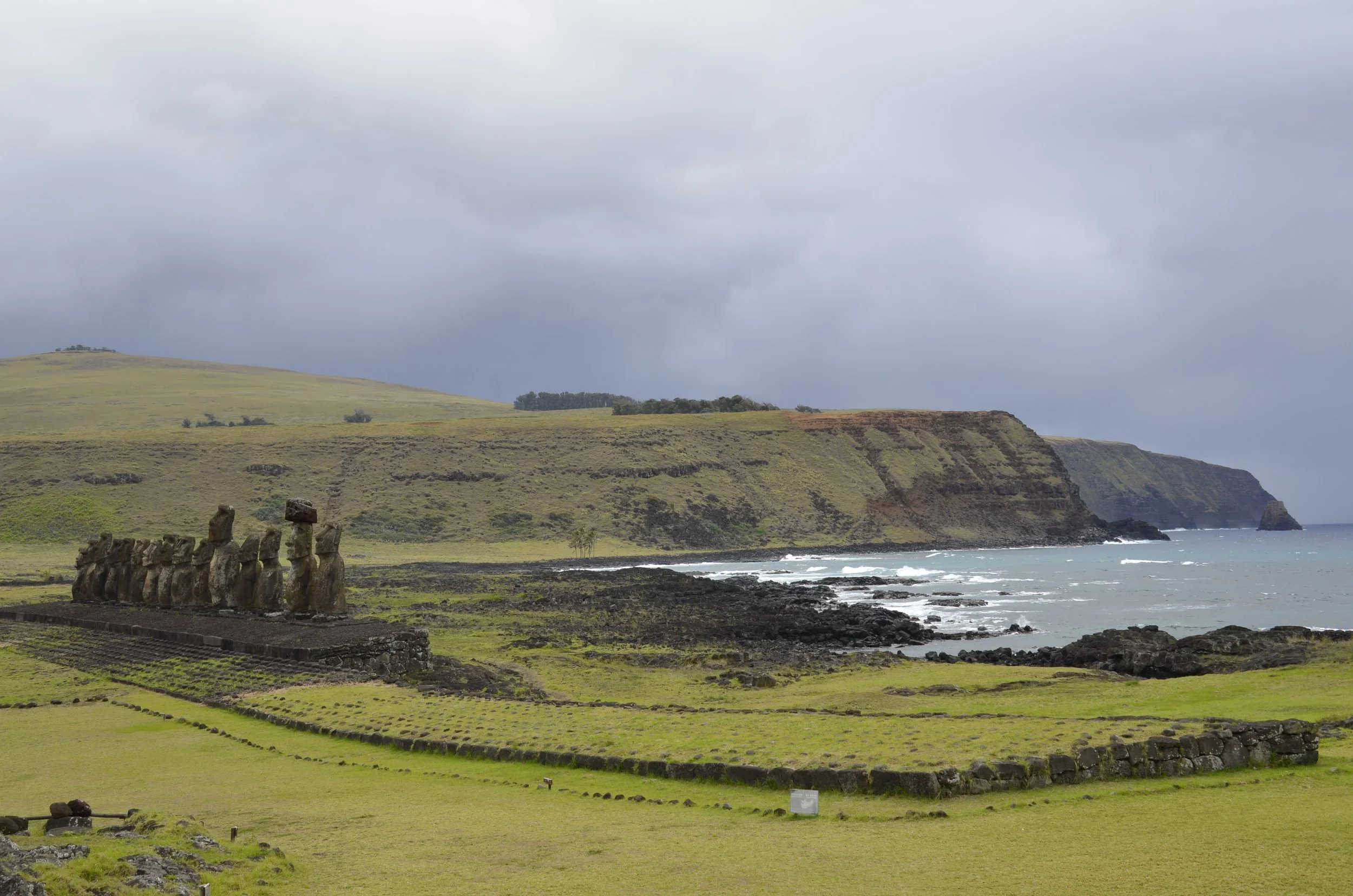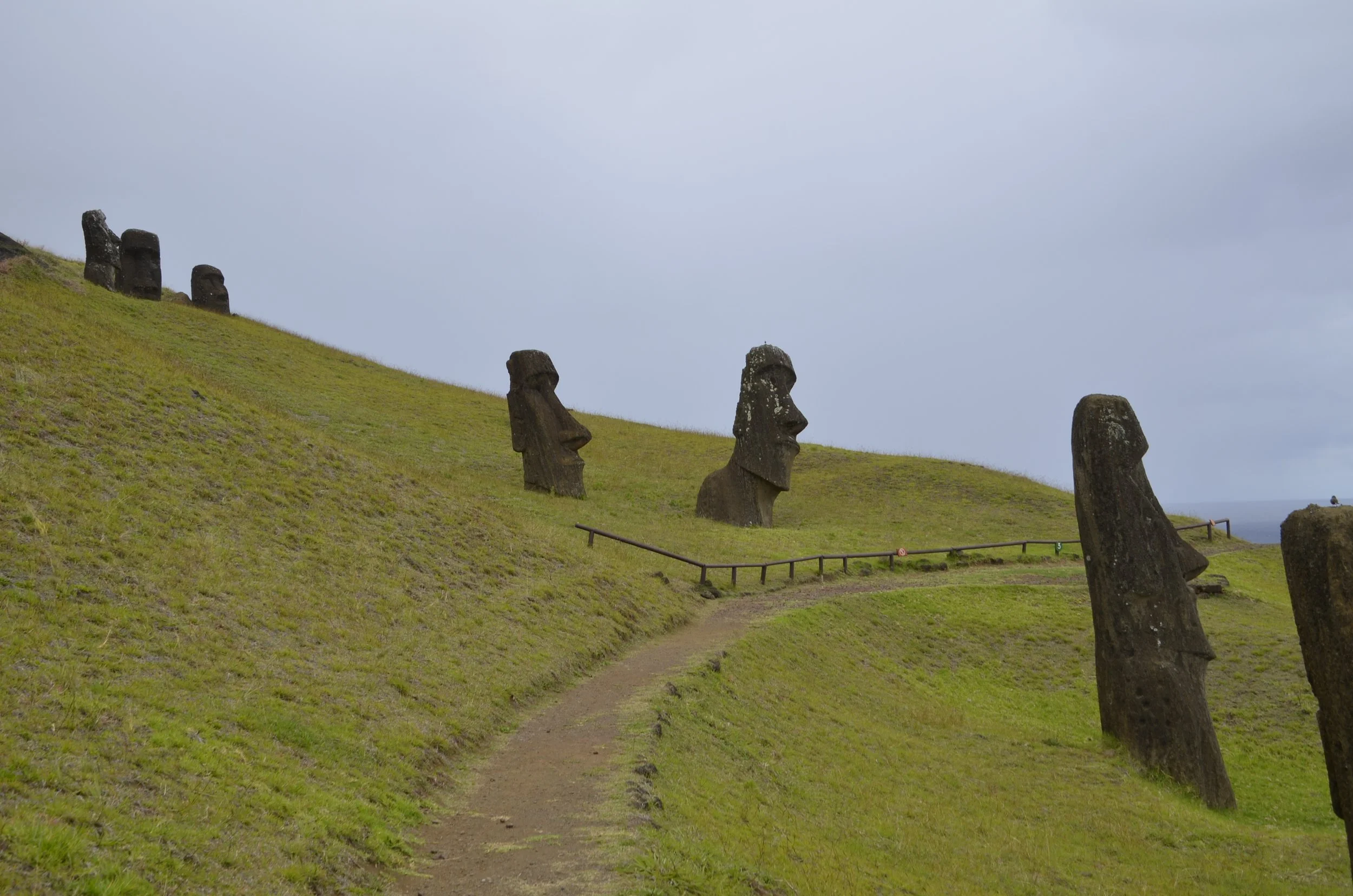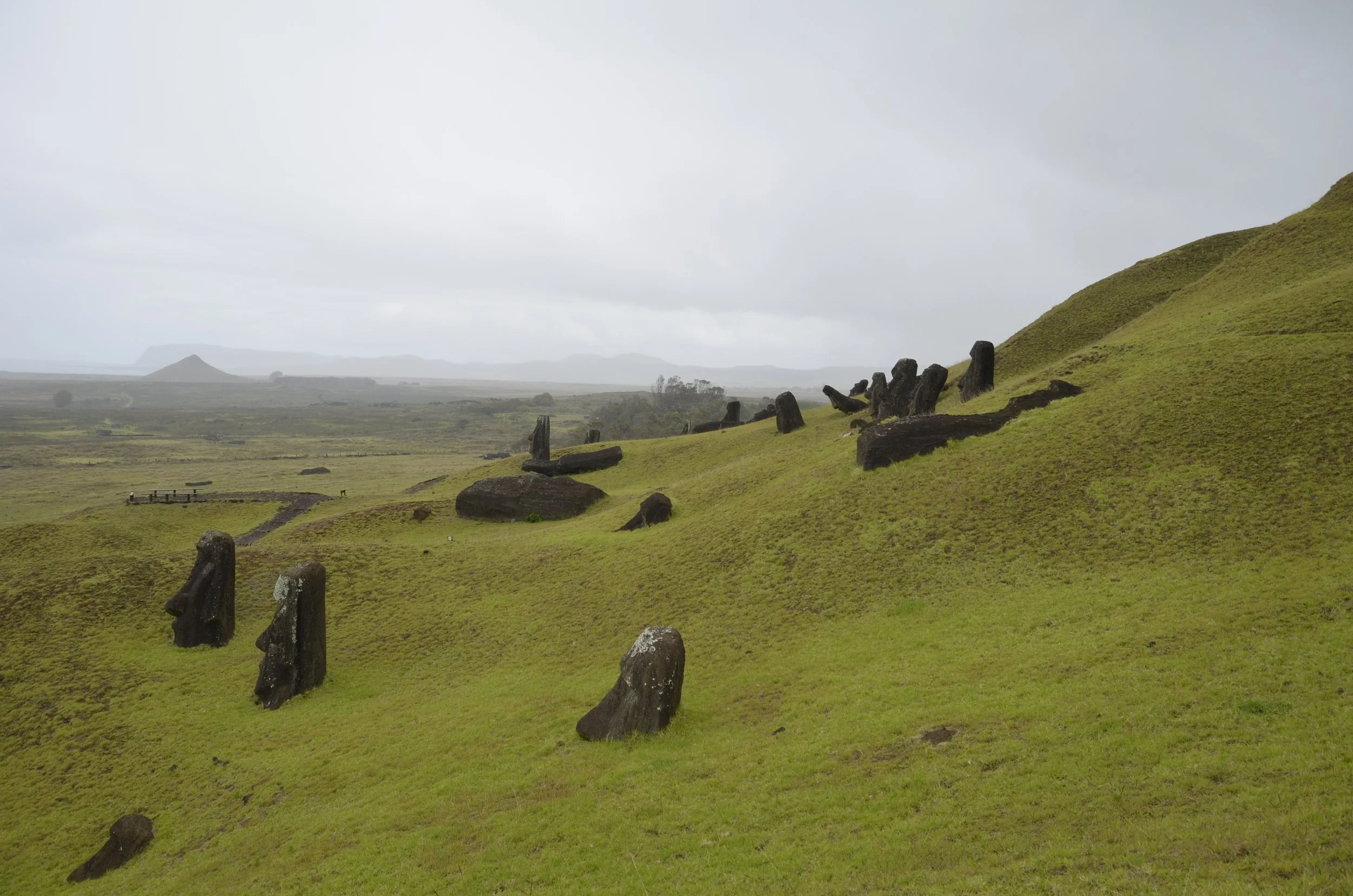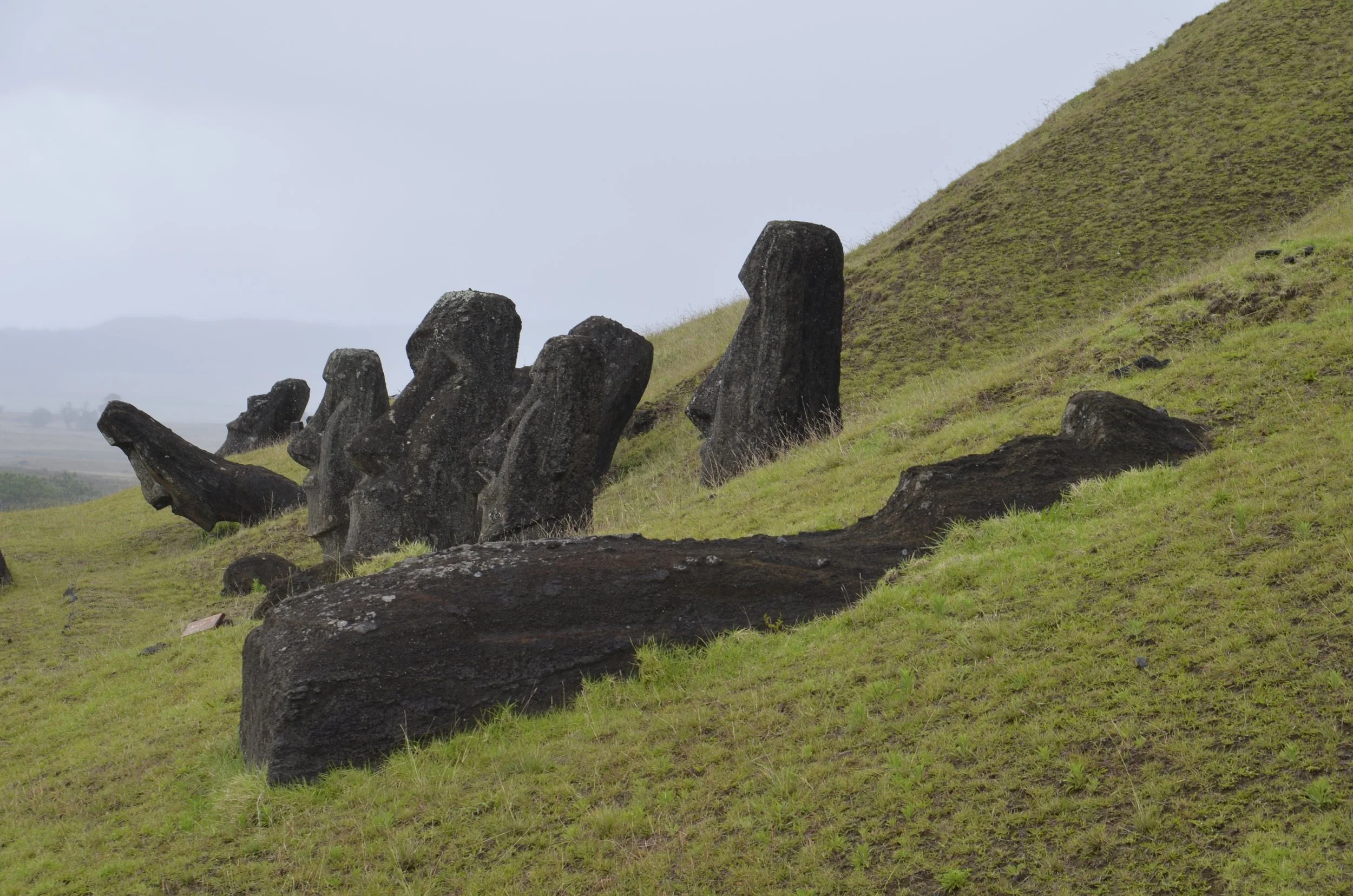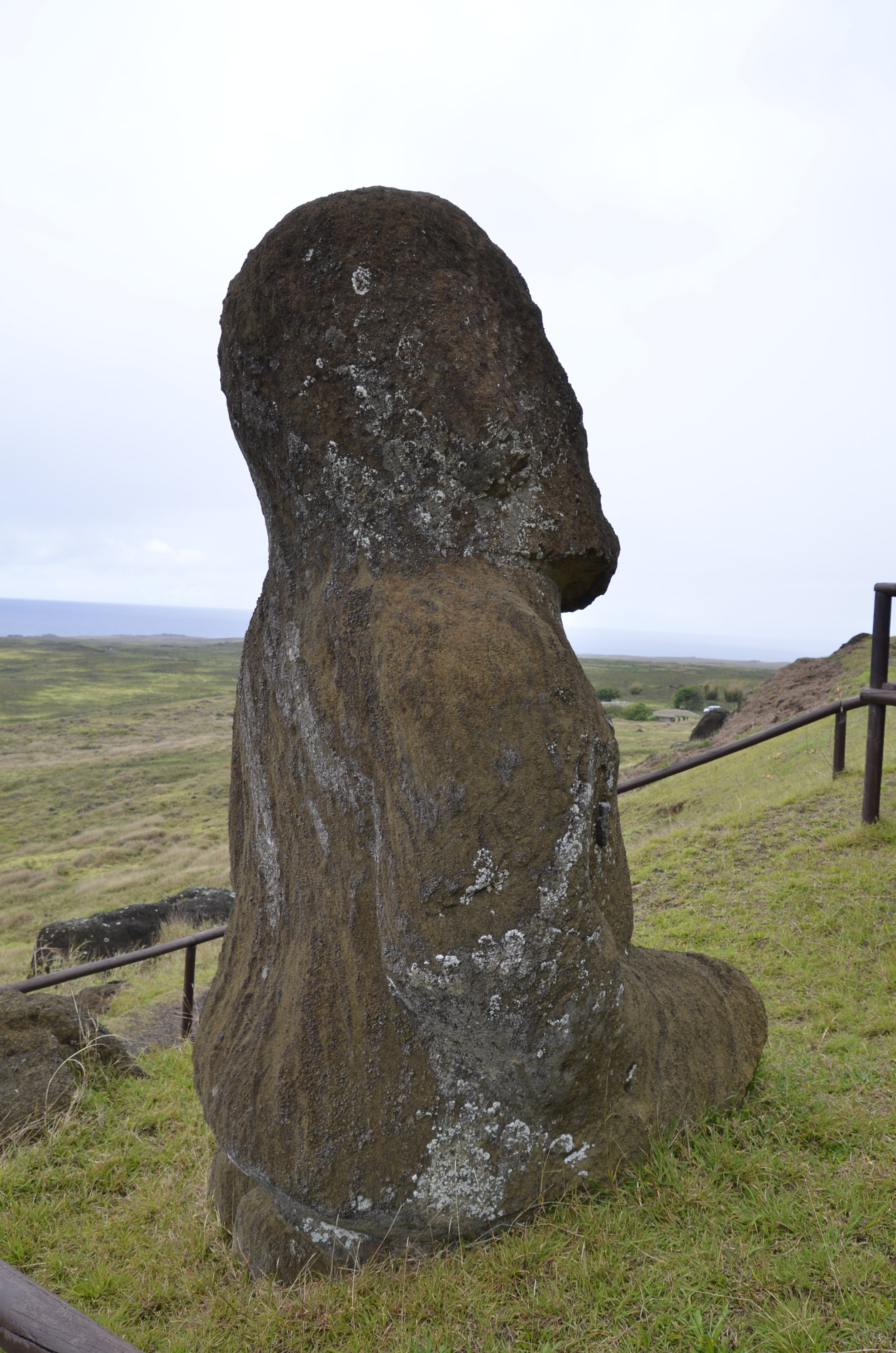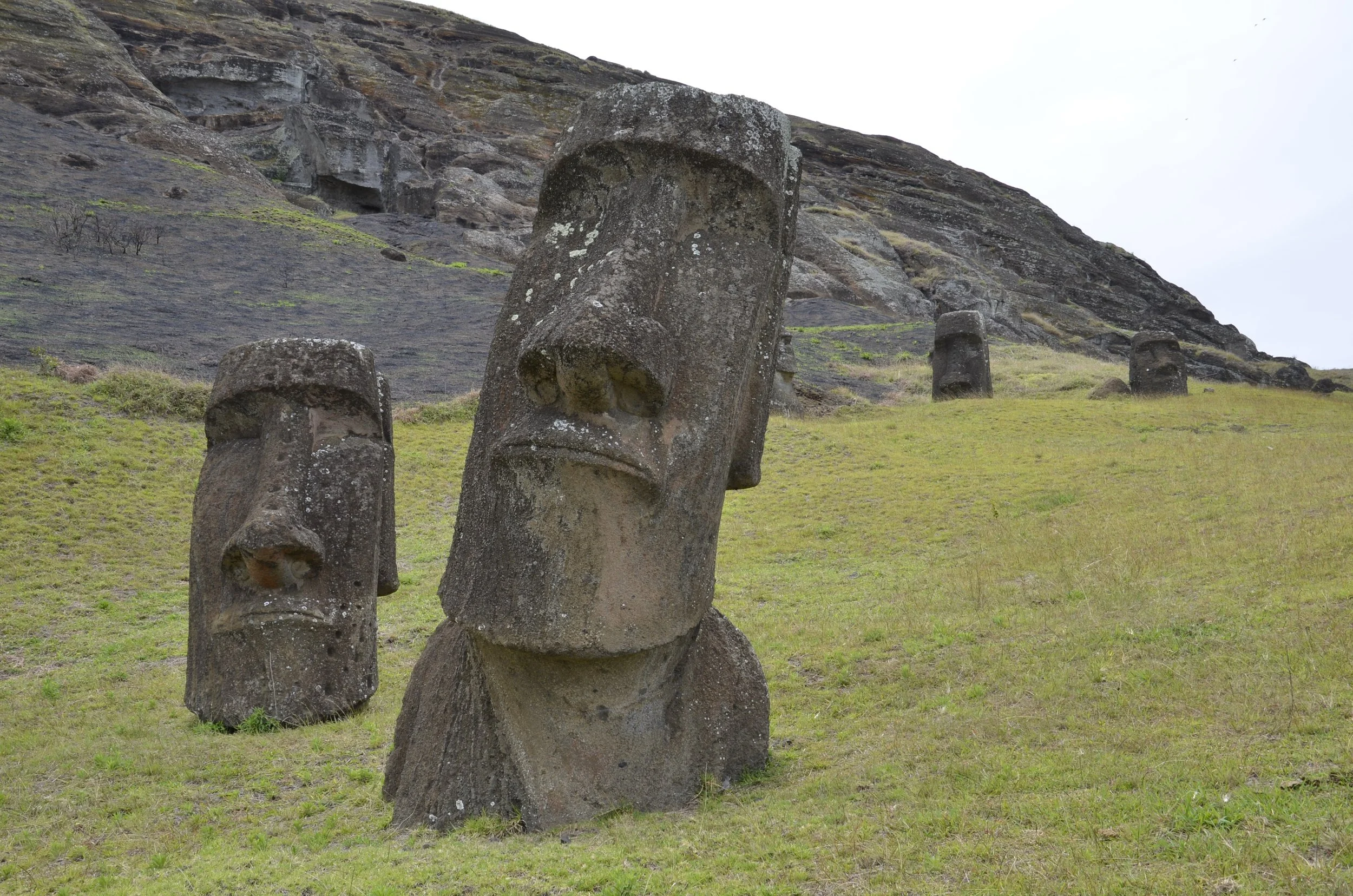Last of the Rapa Nui stories
Steve and I had rented a car for 2 days and explored the island on our own. On the second day, we did sunrise at Tongariki, and then had plenty of time to wander at will. As I noted previously, we even went back to Anakena beach to get the morning sun on the moai faces -
Nearby was a gorgeous secluded beach called Ovahe -
There was a site that had petroglyphs, that were best seen in early morning light, so guess where we went next? It may not be too clear, but this is a nearly thousand year old carving of a tuna -
We decided to hike on an easy trail that followed a “moai road” from the quarry to the coast. One hypothesis of how the moai were moved was “walking” them along this road, using a series of ropes -
We started at the coast, and as we walked, we passed about a dozen fallen moai -
About halfway there, we started getting a glimpse of the quarry (in the green, underneath the hill on the left hand side of the picture) -
This pair of moai fell so that we could see the carving on the face very well -
Note the angular spaces for the eyes. Our guide told us that the last step done after erecting the moai on platforms was to carve the eyes into a smoother, deeper and more oval shape, in order to place the coral eyes that were apparently in all erected moai. Here’s an example from another site:
On our way back…
… we were repeatedly dive-bombed by a raptor - a Chimango Caracara - and I actually got hit on the top of my head (and it felt like the beak, not a talon)!
On our last full day on the island, we toured with a guide and were able to go in all the sites we wanted. We started with Rano Kao - the largest crater on the island, which is filled with fresh water and reeds.
Akahanga was another site with toppled moai and a large platform, but interestingly, it had some scoria within it (the red stone usually used for topknots) -
The rain clouds were moving in as we approached the quarry, so we detoured to Tongariki, to get a few closer up shots (than what we had on the circling road) -
This site included the “Traveling Moai” that was given to Japan for a number of years, in recognition of their time, money and the huge crane that was used to restore the platform and numerous moai of Tongariki -
One archaeologist believes that there were once 30 moai on this extensive platform -
Now on to my absolute favorite site on the island - Rano Raraku, commonly referred to as “the quarry”. As we first started walking in there, it was cloudy and spitting rain…
… but that didn’t stop this intrepid photographer! ;)
I felt like we were walking through a garden of growing moai.
All of these buried moai were actually complete and what we don’t see is 10-20 feet of covered stone!
There was only one kneeling moai ever found -
For some reason, this is the most famous moai in the quarry, as everyone seems to photograph and share this tilted one -
I just couldn’t get enough of these enigmatic stone figures, but you probably have. :) As we drove around the island, we encountered the free roaming horses…
… and cattle…
…that we had been cautioned about.
Alrighty then… I got these posts done just before we’re to join our three week Antarctic cruise (!) so you won’t hear from me for awhile. When I come back, I hope to have tons of “dazzling” pictures to share. Ta-ta!
